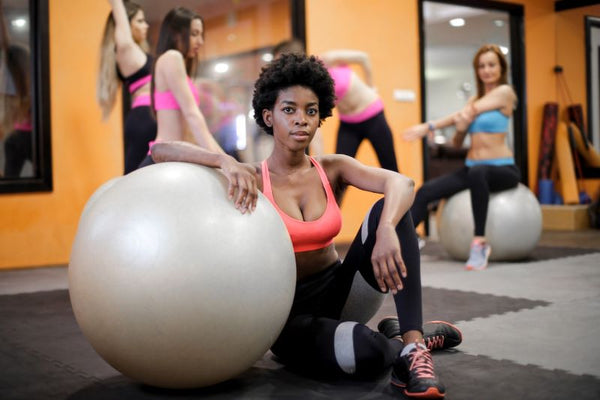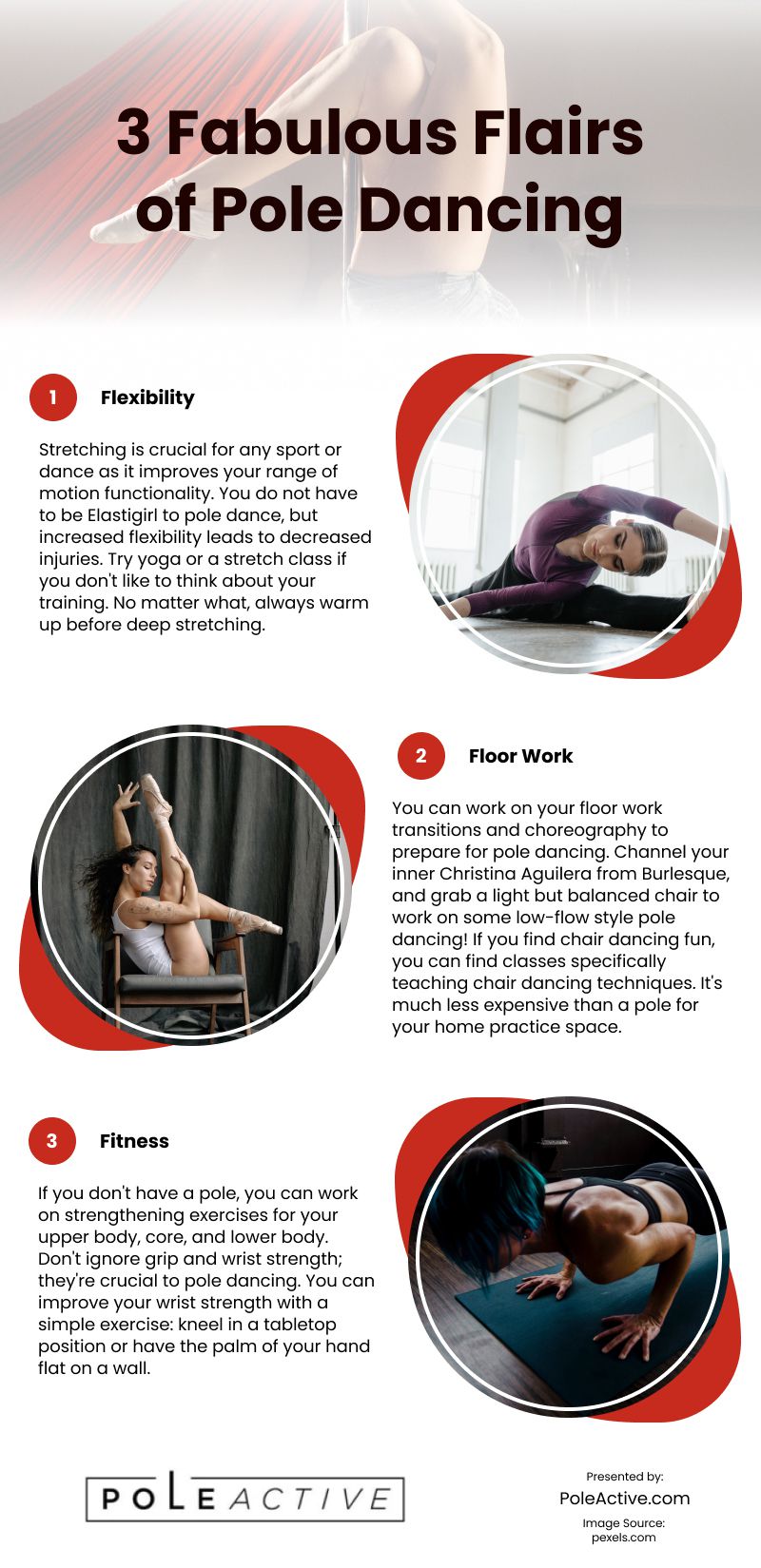News
The 3 Fs to Practice Pole Dancing Without a Pole

Because the word pole is part of the name, you may think a pole is required to practice pole dancing. However, there are other ways you can easily practice and perfect your moves at home without it.
Pole dancing is not about just swinging on a pole. Initially, you can do exercises to build strength, grip, and flexibility as a beginner. You can also do some basic spins, planks, and freestyle moves that you can learn without a pole. You can use a wall or a chair as an alternative if necessary.
First, identify what level of dancer you are and what pole dancing will look like with your experience. As a beginner, that may be basic spins, learning grips, and sequences for getting into inversions. Set personal goals, so you know where to focus your off-pole training. Overall, there are three aspects to training for pole dancing without the pole:
1. Flexibility
You do not have to be Elastigirl to pole dance, but increased flexibility leads to decreased injuries. Stretching is crucial for any sport or dance as it improves your range of motion functionality. You could try yoga or a stretch class if you don’t like to think about your training, or there are specific off-pole flexibility courses. No matter what, always warm up before deep stretching.
2. Floor Work
Pole dancing isn’t always doing complicated tricks. You can’t have pole dancing without some floor work. You need smooth movements and seamless transitions to be a better all-around dancer. You can work on your floor work transitions and choreography to prepare for your pole dance. Even minor things like assessing, practicing, and perfecting the quality of your lines will improve your overall performance.
While working on your floor routine, you can practice some chair dancing. Channel your inner Christina Aguilera from Burlesque, and grab a light but balanced chair to work on some low-flow style pole dancing. You can practice various moves and splits while still training your muscles for pole dancing, as a chair is much less expensive than a pole for your home practice space. If you find chair dancing fun, you can find classes specifically teaching chair dancing techniques.
3. Fitness
Pole dancing is a blend of graceful moves, strengthening, and cardio. If you don’t have a pole, you can work on strengthening exercises for your upper body, core, and lower body. Try to incorporate push-ups, planks, V-sits or jack knife sit-ups, and wall sits. Check out more strengthening exercises here.
Choose your favorite cardio method and go for it. It can be another cardio-based dance class, power yoga to get cardio and strength, or a simple jog around your neighborhood. You will be surprised how effortless a pole class or complex move will feel after incorporating some training outside of class.
Don’t ignore grip and wrist strength; they’re crucial to pole dancing. Work on your grip with an inexpensive adjustable expander. You can improve your wrist strength with a simple exercise: kneel in a tabletop position or have the palm of your hand flat on a wall. Ensure your wrist, elbow, and shoulder are in line. Lift the heel of your wrist off the floor or push it away from the wall. Do this 15 to 20 times per wrist.
Stay Consistent
You will never get to it if you don’t set time aside for your training. Saying you will start practicing tomorrow is an easy out because tomorrow never comes. Put your workouts on your calendar and stick to your schedule.
If you’re struggling to get motivated, put on your pole fitness clothes and blast your pole workout playlist to get you pumped. Remember to track your progress. As improvements happen gradually over time, it can be hard to recognize just how far you’ve come unless you document your achievements along the way. If you work better off incentives, reward yourself with dance-related gear such as pole dancer shoes or pole garter shorts.
Don’t Forget to Visualize
Thanks to COVID-19 and lockdowns, many pole training videos are available online now. If you are a beginner trying to learn the basics and grasp sequences for moves, you can watch a clip and mentally run through the movements. This will help create new connections in your brain and help you remember the move without thinking about each step, making the sequence easier to put into practice.
You can visualize your whole routine or performance if you are more advanced. When you memorize your choreography, you can depend on muscle memory to execute the moves without concentrating on each part. This will your dance look much more cohesive and effortless.
Overall, pole dancing is here for you, and you will get out of it what you put into it. If you are happy learning casually with slower progression in a class environment, that’s perfect for you. If you want to progress faster, you know now that you don’t need a pole at home to work on your skills. Don’t let a lack of equipment or finances keep you from working on your dance form. There’s always a way, and a little creativity will help you find it.
Infographic
The fact that the term includes the word "pole" can lead you to believe that a pole is required to execute pole dancing. There are many distinct aspects to pole dancing and there are numerous methods for honing your skills at home. You may start by working out to get stronger, tougher at grasping and flexibility.


